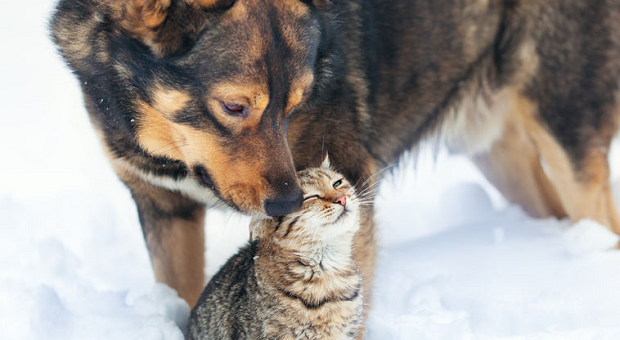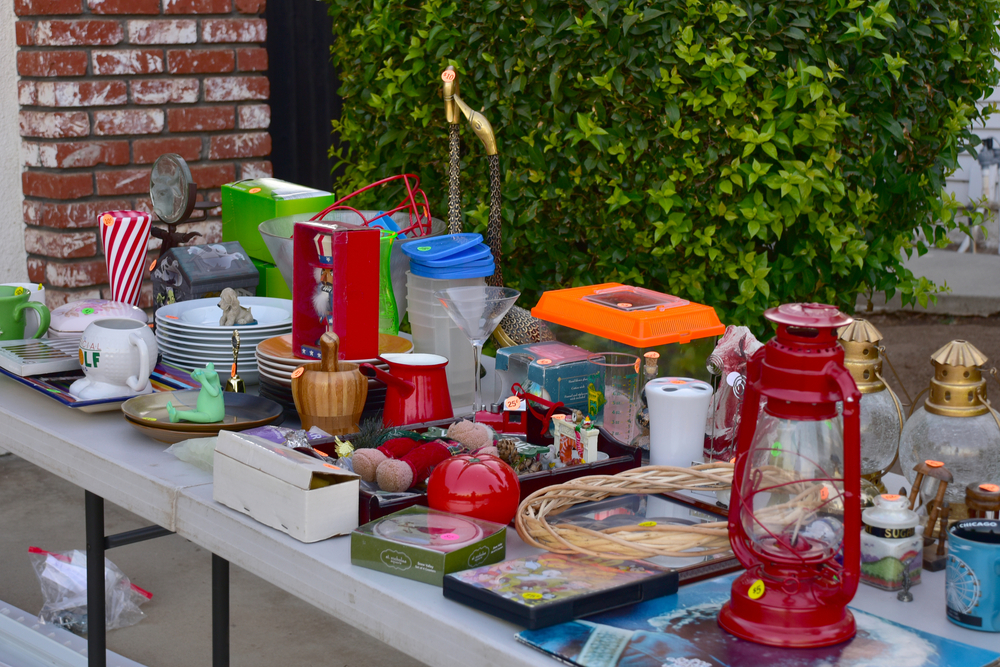It’s that time of year again – the time when everything gets cold, windy and wet. For us, it’s not so bad because we can bundle up with warm boots, coats and gloves. For our pets, though, winter is rough. There are several steps that we as pet owners can take to make it a bit easier on them, though.
We’re going to give some tips to help keep both your indoor and outdoor pets warm, dry and comfy.
Extra Coverage/Shelter
If your pet lives outside, you need to make sure that he has a warm, wind-resistant shelter that is plenty big enough for him to get in to. Put warm straw or hay in it and do what you can to seal cracks. If it gets too cold – below freezing especially – consider bringing your dog or cat inside.
Though it may seem that indoor pets have it made – and comparatively, they do – they still have some challenges when cold weather rolls in. For instance, pets that are kept inside don’t grow a nice, fluffy winter coat like outdoor animals do, at least not to the same extent.
If your pet is going to be outside for any length of time, or if it’s particularly cold outside, you may want to consider a sweater or rain coat for him.
Regarding large pets such as horses, you’ve probably seen them with “ice blankets” on. Though many people look at them and think that they’re cold like that, if your horse has a proper winter coat, the ice on his back actually acts as an insulator to keep body heat in and wind out. They’re actually warmer.
However, if you have a show animal that you keep clipped, he will most definitely need a blanket on when he goes out and when temperatures dip at night especially if he’s going to be outside. If he’s inside, make sure to add some extra straw or shavings to his stall and close external windows to keep the heat in and the wind out. Do that for all of your stalled pets whether they’re clipped or not.
Just a note here about animals kept in a stall – they still need to get plenty of exercise so make sure that they’re getting out for at least a couple of hours per day, weather permitting.
Water
When temperatures dip mammals need more water. That goes for animals as well as for people. It takes a bunch of extra fuel to maintain body temperature when it’s freezing so make sure that your animals have plenty of fresh drinking water available to them.
Be especially careful if your pets are outside; water buckets can freeze in as little as an hour or so if the temps are low enough. Automatic waterers help with this some because they only hold a bit of water and then refill when a drink or two is taken. You can also get ones with heaters on them to further assist with freezing. However, if SHTF, automatic waterers won’t be an option unless you have your own power.
Using a cooler or an insulated water bucket (or 2 buckets stacked inside each other with hay/straw in between) will be surprisingly effective at keeping your water from freezing, and we’ve had pretty good success with putting a big hard ball, like a kid’s hard plastic ball, in the trough or bucket.
It moves around and helps keep the water from freezing. We also had a friend who put old cooler lids in her troughs and buckets. The horses have to push it down to get a drink and it was pretty effective to about 0 degrees F.
Foot Protection
With dogs and cats, ice can collect between their toes and constant contact with frozen ground can damage the pads of their feet from frostbite. If your dog or cat is going to be out for long, he should have booties on.
Ice also collects on the bottom of horses’ hooves. Snow will actually ball up so that the horse is walking on ice instead of on his hooves. Obviously, this is a safety hazard so if you’re bringing the horse from the pasture to the barn or across a hard surface, make sure that his hooves are clear of ice first.
Sole bruises are an issue with horses when the ground is frozen, too. You can combat this by using pads when you shoe him. If you ride in the ice much, you can get your horse shod with special types of shoes that provide more grip to keep you both safer. On the flip side, many people choose to let their horses go barefoot in the winter. Either is fine – just decide based upon your horse and how often you’ll be riding.
Video first seen on Entirely Pets
Awareness
You need to be cautious in the winter when starting vehicles because cats and other small critters like to hide in warm places like car motors, fireplaces (chimneys) or dryers. Double check before you fire up the wood burner or the dryer and honk your horn before you start your car.
Know the Signs of Hypothermia
Though many people don’t think about this, animals are more susceptible to hypothermia than you may think. Recognizing the symptoms is critical to getting your pet the treatment that he needs and is part and parcel of winter preparedness for pets.
Hypothermia is what it’s called when the body temperature drops below normal. It’s the first phase of freezing to death and is a critical point. He’s close to death once his body temperature starts dropping.
Symptoms of hypothermia are similar to those in people: lethargy, decreased breath rate, decreased heart rate, unresponsiveness, weakness and shivering. Shivering is the body’s natural way to increase body temperature.
If you notice these symptoms in your pet, get him to a warm place immediately because you need to get his body temperature up. Good spots include in front of the fireplace or by the heat vents.
You can also use a warm bath but be careful that he doesn’t get cold when he gets out because wet fur won’t hold heat and may make matters worse if he isn’t going to be some place extremely warm.
A heating pad is excellent to use for bringing up body temperature but use it on low so that you avoid burning him.
Your pet is loyal and provides good company and protection for you so make sure that you treat him humanely in the winter. Keep him warm and fed, make sure that he has plenty of water and show him plenty of love and attention.
If you have any tips that you’d like to for winter preparedness for pets, please share them with us in the comments section below!
This article has been written by Theresa Crouse for Survivopedia.







































































Comments 2